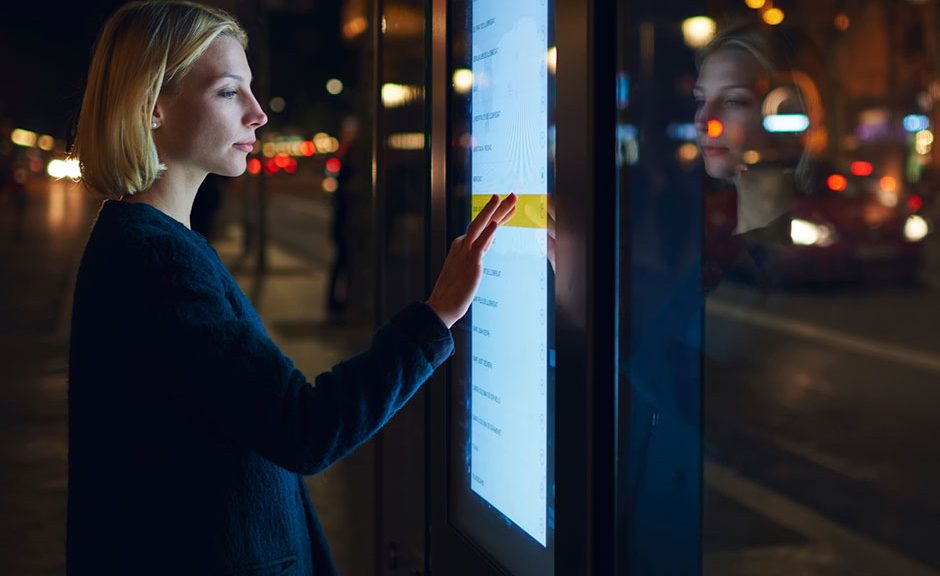The Tomcat init script in the tomcat7 package before 7.0.56-3+deb8u4 and tomcat8 package before 8.0.14-1+deb8u3 on Debian jessie and the tomcat6 and libtomcat6-java packages before 6.0.35-1ubuntu3.8 on Ubuntu 12.04 LTS, the tomcat7 and libtomcat7-java packages before 7.0.52-1ubuntu0.7 on Ubuntu 14.04 LTS, and tomcat8 and libtomcat8-java packages before 8.0.32-1ubuntu1.2 on Ubuntu 16.04 LTS allows local users with access to the tomcat account to gain root privileges via a symlink attack on the Catalina log file, as demonstrated by /var/log/tomcat7/catalina.out.
Monthly Archives: October 2016
CVE-2016-4436
Apache Struts 2 before 2.3.29 and 2.5.x before 2.5.1 allow attackers to have unspecified impact via vectors related to improper action name clean up.
CVE-2016-5180 (c-ares, debian_linux)
Heap-based buffer overflow in the ares_create_query function in c-ares 1.x before 1.12.0 allows remote attackers to cause a denial of service (out-of-bounds write) or possibly execute arbitrary code via a hostname with an escaped trailing dot.
Onapsis Security Advisory ONAPSIS-2016-042: SAP OS Command Injection in SCTC_REFRESH_CHECK_ENV
Posted by Onapsis Research on Oct 03
Onapsis Security Advisory ONAPSIS-2016-042: SAP OS Command Injection in SCTC_REFRESH_CHECK_ENV
1. Impact on Business
=====================
By exploiting this vulnerability an authenticated user will be able to take full control of the system.
Risk Level: Critical
2. Advisory Information
=======================
– Public Release Date: 09/22/2016
– Last Revised: 09/22/2016
– Security Advisory ID: ONAPSIS-2016-042
– Onapsis SVS ID: ONAPSIS-00251
-…
Onapsis Security Advisory ONAPSIS-2016-043: SAP OS Command Injection in SCTC_TMS_MAINTAIN_ALOG
Posted by Onapsis Research on Oct 03
Onapsis Security Advisory ONAPSIS-2016-043: SAP OS Command Injection in SCTC_TMS_MAINTAIN_ALOG
1. Impact on Business
=====================
By exploiting this vulnerability an authenticated user will be able to take full control of the system.
Risk Level: Critical
2. Advisory Information
=======================
– Public Release Date: 09/22/2016
– Last Revised: 09/22/2016
– Security Advisory ID: ONAPSIS-2016-043
– Onapsis SVS ID: ONAPSIS-00256
-…
Digital Whisper Electronic Magazine #76
Digital Whisper Electronic Magazine issue 76. Written in Hebrew.
Smart cities with Invisible Dangers
Smart cities are a real thing—could you live in one? Do you live in one?
Actually, a smart city is an “urban development vision” used to manage a city’s assets by integrating multiple information and communication technology (ICT) and Internet of Things (IoT) solutions within the city. A smart city’s ultimate goal is to improve the quality of life for its residents.
With just an internet connection and one of the endless number of devices available, residents can do a multitude of things like pay parking meters and purchase movie tickets. Did your device run out of battery while you were on-the-go? Go ahead and hook up to one of your city’s many public charging stations.
Yes, a properly planned smart city can make life more convenient, but this is also a double ended sword. However convenient, in regards to internet security, it is very dangerous. At the end of any given day, there’s a high possibility that any one of these connected devices could be hacked, while criminals getaway with your top private information.
Danger wherever you look
City Bikes
The next time you take one of those public bikes for a spin, keep in mind that these electric bike stations are run by a computer… a computer that can be hacked like any other connected device. You’ll see that at each bike station there’s a small computer screen for riders to register, recharge passes, report incidents, and map the other stations in close proximity. But like any other computer, cybercriminals can use a lot of different techniques to take advantage of any vulnerability that these systems might have.
On these payment screens, in the maps section, there are various (public) sections on the platform, such as “Report an Error” “Privacy Policy” and “Terms of Use”. When these are tapped, an internet explorer window pops up. From there, the cybercriminals have access to a virtual keyboard—this will ultimately give them the power to execute those unwanted applications. This is the start of their hack—now they can access and collect info belonging to all those wanting to rent a city bike, getting their full names, verified email addresses and phone numbers. Some hackers will be able to steal customer payment data, too.
Taxis
New York City’s famous yellow taxi has jumped on the “smart experience” bandwagon. Aside from the tourist maps, Broadway ads and business cards that fill the back seat of the yellow cabs, passengers can use the tablet attached to the Plexiglas divider separating you from the driver. Go ahead and read the news during your commute, and when you arrive at your location, and make your payment from the same device. Just remember, if a cybercriminal gets in the back of this cab he could successfully install malware and gain access to a lot of customer information. Likewise, remember to watch out for the public chargers in the taxi. Just imagine all the people whose privacy could be in danger.
We leave you with a last note, if a city wishes to become a smart city, installing these intelligent devices requires that all businesses commit to the necessary security measures to safeguard government and public privacy. Keep your citizens safe by following adequate security assurances.
The post Smart cities with Invisible Dangers appeared first on Panda Security Mediacenter.
Onapsis Security Advisory ONAPSIS-2016-041: SAP OS Command Injection in SCTC_REFRESH_EXPORT_TAB_COMP
Posted by Onapsis Research on Oct 03
Onapsis Security Advisory ONAPSIS-2016-041: SAP OS Command Injection in SCTC_REFRESH_EXPORT_TAB_COMP
1. Impact on Business
=====================
By exploiting this vulnerability an authenticated user will be able to take full control of the system.
Risk Level: Critical
2. Advisory Information
=======================
– Public Release Date: 09/22/2016
– Last Revised: 09/22/2016
– Security Advisory ID: ONAPSIS-2016-041
– Onapsis SVS ID:…
Mozilla Reduces Threat of Export-Grade Crypto to Firefox
The Firefox browser will now deny TLS connections to servers using weak Diffie-Hellman keys.
Is it safe to connect to a public Wi-Fi hotspot?
Enjoy going for a drink at your local coffee store whilst getting some work done or browsing the web? With more and more cafes, bars and libraries these days resembling public workspaces and free Wi-Fi feeling like an essential part of daily life, it is very easy to go to a local café and feel at home.
But are public Wi-fi hotspots really safe places to browse the Internet or do we have to be on high alert anytime we’re online in a public place?
Let’s have a look at some of the dangers one faces when connecting to a public network:
Page Spoofing
It’s easy to take for granted that a venue’s network actually belongs to that specific venue.
How many times have you sat down at a cafe and connected to the venue’s network at the click of a button? It’s this simplicity that hackers take advantage of when creating a malicious access point.
It’s very easy for an attacker to create a fake page that looks very much like the real thing. For example, when you sign up to the network you may be redirected to a Facebook sign in page. This could potentially be a fake, and entering your details would send them straight to the cyber attacker.
Luckily there are small indicators that can help us, on most occasions, to know if a page is definitely a fake.
Facebook for example, encrypts all data sent to its pages by connecting its users via SSL.
If any page that typically connects through SSL doesn’t show a padlock next to the page address it’s best not to give personal details!
Sniffing Apps
In an open network it is very easy for an attacker to capture the data traffic sent from your device. In fact, there are free easy to use apps, called “sniffing apps”, dedicated to this very purpose.
Although the common WPA2 routers do encrypt connections, these apps are capable of sniffing out the PSK (password). If an attacker does this they can then decrypt all traffic connected from a device to the network.
These risks have actually led police in Derbyshire in the UK to release a statement this month on the growing dangers of cyber crime:
“The UK now has more than 300,000 public Wi-Fi hotspots, which means more people than ever before are potential targets for cyber criminals, simply because they don’t know how secure the networks they’re using are.”
Third-Party Data Gathering
Sadly, even when you’re connected to a venue’s actual network you have no guarantee of privacy. In fact, venues often use their public Wi-fi hotspots to gather information about consumers.
Though third-party data gathering isn’t likely to end up with your passwords or your identity being stolen, your personal details are often being taken without your consent.
Whilst most venues directly ask a customer for an email address or number in order to access their Wi-fi, some go the extra mile of injecting cookies into your device’s network in order to track your browser history, typically resulting in an onslaught of targeted ads.
A great way to protect yourself against these attacks as well as against sniffing apps is to use a VPN (Virtual Private Network) service. This will ensure that all data traffic from your device is encrypted, whether the page you’re visiting is secure or not.
Another step that can be taken is to use a personal mobile broadband dongle, which, though slower, can be used in public spaces and is less likely to be compromised.
The best bet always, however, is simply to avoid sharing personal information, especially bank details, when on a public network. Stick to that principal rule and you should be ok.
Happy browsing!
The post Is it safe to connect to a public Wi-Fi hotspot? appeared first on Panda Security Mediacenter.



